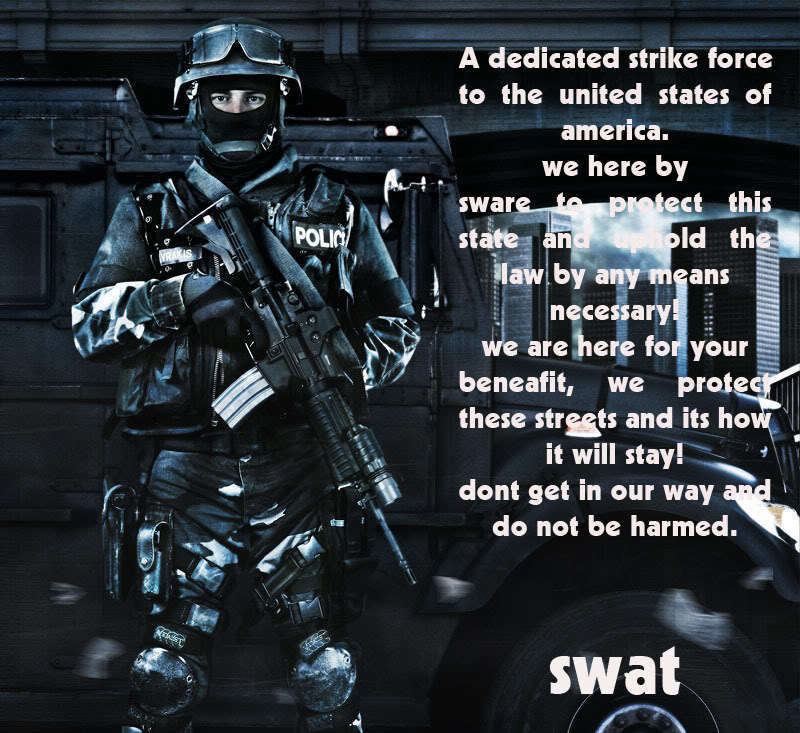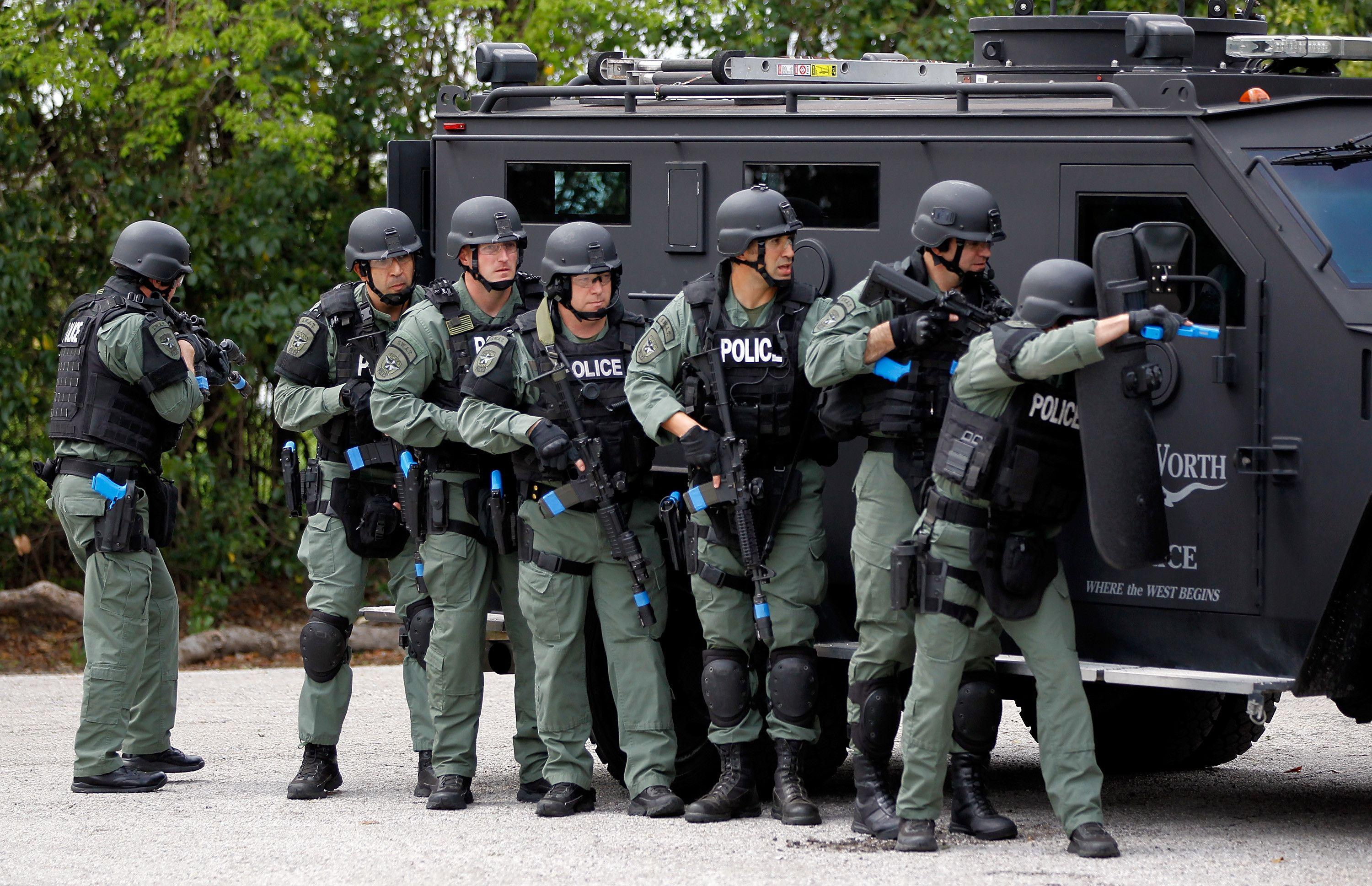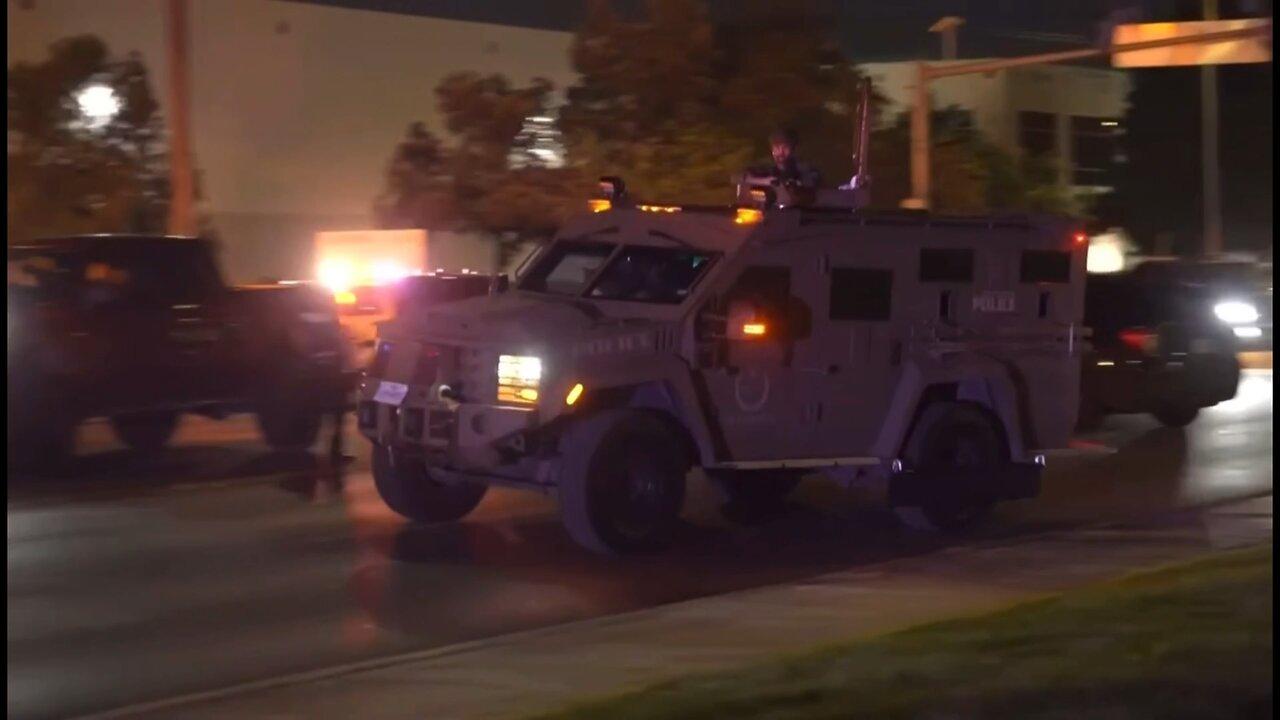SWAT Teams: History, Missions & Controversies | A Deep Dive
Are specialized law enforcement units, equipped and trained for high-risk situations, truly essential for maintaining public safety in an increasingly complex world? The answer, supported by decades of operational experience and evolving strategies, is a resounding yes.
The evolution of Special Weapons and Tactics (SWAT) teams, from their inception in the 1960s to their current role in modern society, reflects a continuous adaptation to the ever-changing landscape of crime and security threats. Their primary objective, to resolve dangerous situations with precision and professionalism, has remained steadfast. This article will delve into the multifaceted world of SWAT, exploring its history, organizational structure, the rigorous training its members undergo, the sophisticated equipment they utilize, and the diverse range of missions they undertake. We will also examine the controversies surrounding SWAT deployments, look at the future of these elite units, and consider global perspectives on their role in law enforcement. Understanding the intricacies of SWAT operations is crucial for anyone interested in law enforcement, public safety, or simply seeking a deeper comprehension of the forces that shape our communities.
In order to provide a comprehensive overview, lets explore the key aspects of SWAT operations.
- Bolly4youcom Your Gateway To Bollywood Movies More
- Who Is Vin Diesels Partner Exploring Paloma Jimenezs Life
| SWAT Team Element | Description |
|---|---|
| Origins | The concept of SWAT originated in the 1960s, during a period of social unrest and rising crime rates. The Los Angeles Police Department (LAPD) is credited with creating the first SWAT team in response to the Watts Riots of 1965. |
| Mission | The primary mission is to resolve dangerous situations with precision and professionalism, protecting both officers and civilians. |
| Evolution | From riot control to counter-terrorism, hostage rescue, and high-risk arrests, SWAT teams have evolved to address the increasing complexity of modern crime. |
| Global Adoption | SWAT-like units have been adopted by many countries, reflecting the global need for specialized law enforcement capabilities. |
The history of SWAT is inextricably linked to the social and political climate of the 1960s. The Watts Riots, a stark manifestation of social unrest, exposed the limitations of traditional law enforcement tactics in dealing with large-scale disturbances. The LAPD, recognizing the need for a specialized unit, pioneered the concept of SWAT. This marked a turning point, signaling a shift towards more tactical and strategic approaches to policing. The initial focus on riot control soon expanded to encompass a broader range of high-risk situations.
As the decades progressed, the role of SWAT teams became increasingly multifaceted. The rise of terrorism, the prevalence of hostage situations, and the escalation of violent crime demanded specialized skills and equipment. SWAT teams adapted and evolved, becoming integral components of law enforcement agencies across the United States and, subsequently, around the world. This expansion was a direct response to the changing nature of crime, necessitating a shift from reactive to proactive strategies. The 1980s, in particular, saw a significant increase in the deployment of SWAT teams, reflecting their growing importance in addressing complex and dangerous situations.
Structure and Organization of SWAT Teams
The effectiveness of a SWAT team hinges on its structure and organization. These units are meticulously designed to ensure efficiency and coordination during high-risk operations. While the specific organizational structure may vary across different jurisdictions, certain common elements define most SWAT teams. The foundation of a SWAT team lies in its rigorous selection process and comprehensive training regimen.
- Yoo Yeonseok Unveiling The Married Life Of The Beloved Star
- Jailyne Ojeda Ochoa From Music To Tv Her Inspiring Rise
Typically, a SWAT team comprises highly trained officers who undergo a rigorous selection process, often involving physical fitness tests, psychological evaluations, and scenario-based assessments. This process is designed to identify individuals with the physical stamina, mental fortitude, and tactical acumen necessary to thrive in the demanding environment of SWAT operations. Once selected, these officers undergo extensive training, encompassing a wide array of skills, including advanced weapons handling, close-quarters combat techniques, hostage negotiation strategies, and tactical driving and vehicle operations.
| SWAT Team Roles | Responsibilities |
|---|---|
| Commanders | Responsible for overall strategy and decision-making, providing leadership and oversight during operations. |
| Tactical Operators | Specialized in breaching, marksmanship, close-quarters combat, and executing tactical plans. |
| Snipers | Experts in long-range precision shooting, providing overwatch and neutralizing threats from a distance. |
| Medics | Trained to provide medical support during operations, ensuring the safety of both officers and civilians. |
Each member of a SWAT team has clearly defined roles and responsibilities, which are essential for seamless coordination during operations. Commanders, responsible for the overall mission strategy and decision-making, provide leadership and oversight. Tactical operators are the frontline responders, executing the operational plan, utilizing their expertise in breaching, marksmanship, and close-quarters combat. Snipers, with their precision shooting skills, provide overwatch and neutralize threats from a distance. Medics, trained to provide medical support, ensure the safety of both officers and civilians. This meticulous division of labor and clearly defined roles are critical for the success of any SWAT operation.
Training and Requirements for SWAT Members
Becoming a member of a SWAT team is a challenging endeavor that requires exceptional dedication and commitment. The selection process is rigorous, demanding that candidates meet stringent requirements and demonstrate a combination of physical, mental, and tactical skills. The requirements typically include a combination of physical tests, psychological evaluations, and scenario-based assessments. These assessments are designed to identify individuals who possess the necessary attributes to perform effectively in high-stress situations.
Successful candidates undergo intensive training that covers a wide range of skills. This training includes, but is not limited to: advanced weapons handling, close-quarters combat techniques, hostage negotiation strategies, and tactical driving and vehicle operations. SWAT members also engage in continuous professional development to stay current with the latest tactics, techniques, and technologies. This may involve regular training exercises, participation in simulations, and collaboration with other law enforcement agencies. The commitment to continuous improvement is a hallmark of successful SWAT teams.
The emphasis on continuous professional development is crucial for maintaining the effectiveness of SWAT teams. As tactics and technologies evolve, so must the training and skills of SWAT members. Regular training exercises, simulations, and collaboration with other law enforcement agencies ensure that SWAT teams remain at the forefront of law enforcement capabilities. This continuous process of learning and adaptation is essential for ensuring public safety.
Specialized Equipment Used by SWAT
The effectiveness of SWAT teams is heavily reliant on the specialized equipment they utilize. This equipment is specifically designed to enhance their capabilities, protect officers, and minimize risks during high-risk operations. The choice of equipment is carefully considered, based on the nature of the mission and the operational environment.
Some of the essential equipment commonly used by SWAT teams includes: ballistic vests and helmets for protection, submachine guns and rifles for precision shooting, non-lethal weapons such as tasers and flashbangs, and advanced communication systems for real-time coordination. The equipment is constantly evolving, with law enforcement agencies incorporating new technologies to improve operational effectiveness. This includes the use of drones, thermal imaging devices, and robotics to gather intelligence and improve situational awareness.
Technological advancements have dramatically enhanced the capabilities of SWAT teams. Drones provide aerial reconnaissance and situational awareness, thermal imaging devices allow officers to see through darkness and detect heat signatures, and robotics can be deployed to assess dangerous situations and minimize risks to personnel. These technological advancements are increasingly integral to effective SWAT operations, enabling teams to make better-informed decisions and respond more effectively to threats.
Types of Missions Handled by SWAT
SWAT teams are deployed in a diverse range of high-risk situations where their specialized skills and equipment are essential. These missions often involve scenarios that exceed the capabilities of regular law enforcement officers. The ability of SWAT teams to effectively handle a variety of complex situations is a testament to their training, preparation, and adaptability.
Common types of missions handled by SWAT include: hostage rescue operations, counter-terrorism activities, high-risk arrests involving armed suspects, and active shooter incidents. The planning and execution of each mission is meticulous. SWAT teams conduct thorough reconnaissance, develop detailed plans, and rehearse scenarios to minimize risks. Their ability to adapt to changing situations is a key factor in their success.
| Mission Type | Description |
|---|---|
| Hostage Rescue Operations | Involving the rescue of individuals held against their will, requiring negotiation skills and tactical proficiency. |
| Counter-Terrorism Activities | Addressing threats related to terrorism, requiring specialized training and equipment. |
| High-Risk Arrests | Involving suspects known to be armed and dangerous, requiring careful planning and execution. |
| Active Shooter Incidents | Responding to situations involving individuals actively engaged in shooting, requiring immediate action. |
Each mission demands meticulous planning and execution. SWAT teams conduct thorough reconnaissance to gather intelligence, develop detailed plans to address specific threats, and rehearse scenarios to minimize risks. Their ability to adapt to changing situations is a key factor in their effectiveness. The meticulous planning and execution of each mission is crucial for ensuring the safety of both officers and civilians.
Controversies Surrounding SWAT Deployments
Despite the crucial role they play in law enforcement, SWAT teams have faced controversies related to their deployment and tactics. Critics have raised concerns about the militarization of police forces, arguing that it has led to the excessive use of force in situations that could potentially be resolved through negotiation or less aggressive tactics. These concerns have sparked debates about the appropriate use of SWAT teams and the need for enhanced oversight.
Several high-profile cases have highlighted the potential for the misuse of SWAT deployments. These incidents have prompted calls for reforms, including stricter guidelines on when and how SWAT teams should be deployed. The balance between public safety and civil liberties is a constant consideration. Law enforcement agencies are increasingly addressing these concerns by implementing reforms and enhancing transparency. This includes better training for officers, improved communication with communities, and greater accountability for SWAT operations. These efforts aim to strike a balance between public safety and civil liberties.
The Future of SWAT Operations
The future of SWAT operations is likely to be shaped by technological advancements and evolving threats. As crime becomes more sophisticated, SWAT teams must adapt by incorporating new technologies and strategies into their operations. The use of artificial intelligence, robotics, and other cutting-edge tools will be crucial for enhancing their capabilities.
Moreover, there is a growing emphasis on community engagement and collaboration with other agencies. This approach aims to build trust and foster partnerships that enhance public safety while respecting civil rights. SWAT teams will continue to face emerging threats such as cybercrime, domestic terrorism, and transnational organized crime. Addressing these challenges will require a multifaceted approach that combines traditional tactics with innovative solutions. The ability to adapt and evolve will be crucial for the continued effectiveness of SWAT operations.
Global Perspectives on SWAT
While the concept of SWAT teams originated in the United States, it has been adopted globally, with variations in structure and operations. Countries around the world have developed their own specialized units to address unique challenges and threats. These units often collaborate with international partners to share best practices and enhance their capabilities. The global perspective on SWAT highlights the importance of cultural sensitivity and adaptability. What works in one country may not be suitable for another, necessitating tailored approaches to meet specific needs.
International cooperation plays a vital role in enhancing the effectiveness of SWAT teams worldwide. Through joint training exercises, information sharing, and collaborative missions, these units can better address cross-border threats and improve global security.
Key Statistics and Data on SWAT Deployments
Data and statistics provide valuable insights into the operations and effectiveness of SWAT teams. According to the National Tactical Officers Association (NTOA), SWAT deployments have increased significantly over the past few decades, reflecting the growing complexity of modern crime. The data paints a picture of the frequency and nature of SWAT deployments, providing a crucial foundation for understanding their impact on public safety.
- SWAT teams are deployed approximately 50,000 times per year in the United States.
- Approximately 80% of SWAT deployments involve serving high-risk warrants.
- Less than 1% of SWAT deployments result in the use of lethal force.
The impact of SWAT teams on public safety is significant. Their ability to resolve high-risk situations with minimal casualties demonstrates their value in modern law enforcement. However, continued efforts are needed to address concerns and improve their effectiveness.

UTG Bipod, Profile, Adjustable Height

Swat Team Wallpapers Top Free Swat Team Backgrounds WallpaperAccess

San Antonio Swat standoff One News Page VIDEO